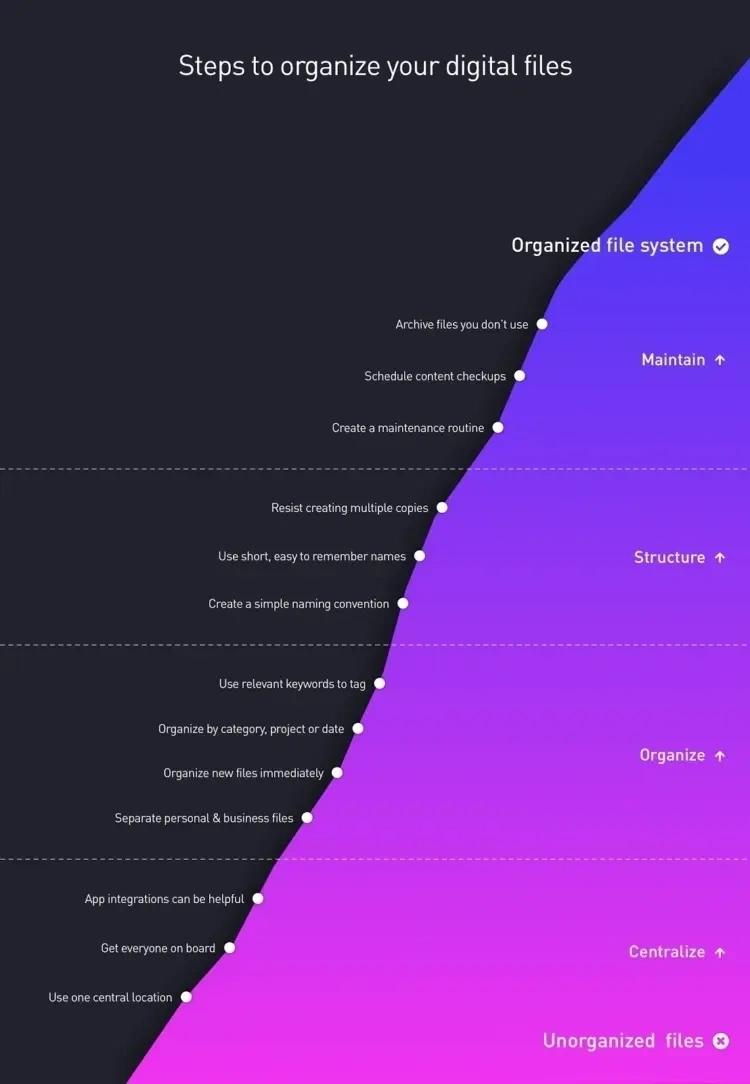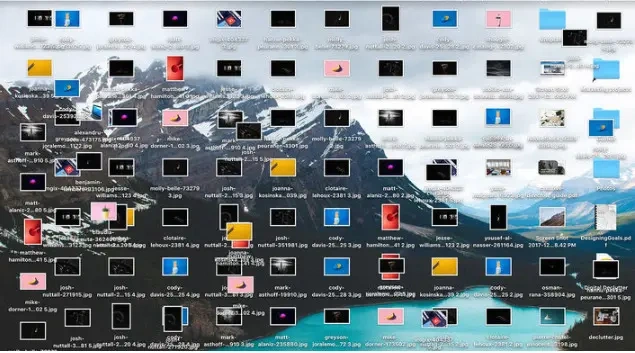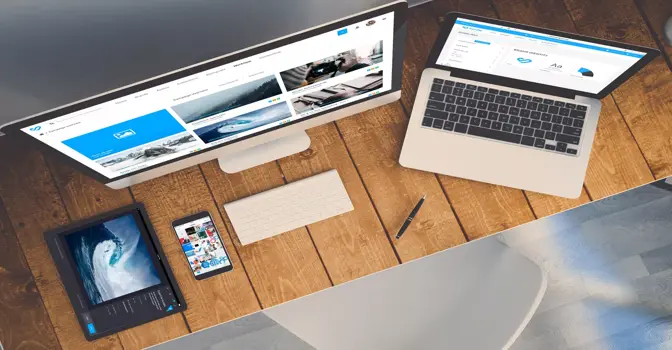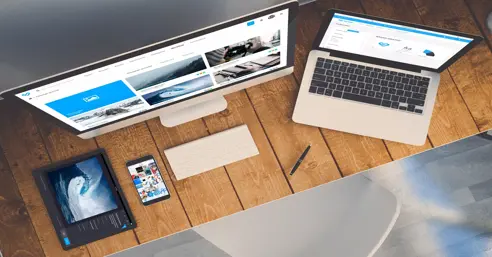Lean, green and clean: How to optimize your workspaces for maximum productivity
For the typical adult, more than half of their day is spent sitting. Many people have desk jobs that require them to be sedentary; and, considering employee wellbeing is strongly correlated to maximizing productivity and performance, the physical area where you work is important in enhancing (or harming) productivity.
Whether it’s using standing desks, implementing clean desk policies, or centralizing digital content with DAM, there are plenty of ways to keep your physical and digital workspaces tidy.
We’ve curated some tips on how to ensure your desk and “digital desk” spaces are optimized to help you do your best work!
How to be productive: Get your space (and stuff) organized and decluttered
Tidy desk, tidy mind! Desk organization might not seem like a productivity hack at first, but there’s research that supports this claim. A desk area that’s scattered with papers, files, and random items has been proven to increase procrastination, hindering work tasks and deterring productivity. Humans enjoy order and organization and when we have a messy space to work in, our brains are overloaded and distracted. Attempting to focus on too many stimulants can cause stress and anxiety, slowing down performance. Desk organization is important because it helps you stay focused and maximize your workflow process.
A study from Harvard University found that students who worked in a clutter-free workspace were able to work steadily for 7.5 minutes longer than students attempting to do the same task in a cluttered workspace.
To enhance your workspace, get a desktop storage organizer to file away papers and important documents. A proper labeling system will help delegate where you can store and retrieve papers, instead of frantically searching around for something you need. With a clear desk, you’re less likely to be distracted by clutter, and can focus on the tasks at hand. Your company will profit long term with the amount of time saved trying to find lost items.
And this concept translates to your digital workspace as well. You wouldn’t leave endless stacks of paper unorganized in your office, so why would you do that to your digital content? If you’re visually-minded, the infographic below outlines the steps you can take to create a super-efficient digital file management system:

Climbed to the summit already? Check out even more tips on conquering digital clutter for good.
Make your spaces visually appealing - Can color psychology also help you understand how to be productive?
Several studies have concluded that colors affect the brain in different ways. Color theory is used in the arts to pair tones together for an aesthetically pleasing effect, however, this idea has gained traction in company offices. While warmer colors can increase heart rate and blood pressure, cooler tones can help calm or soothe.
In your desk area, the influence of certain colors can enhance your performance, creativity, and mood overall. Blue is one of the best colors to have in your work area, improving efficiency and focus. Green has shown similar effects, enticing a heightened sense of calmness and wellbeing.

Since these are two of the most common colors found in nature, it's no wonder that these would bring a sense of inner calm and wellbeing to humans. Incorporate these colors into your space when dealing with tight deadlines or strenuous tasks – these hints of blue and green can help relax your brain.
And let’s face it, the modern worker spends on average 10 hours a day looking at screens! All that blue light isn’t good for your eyes or sleep cycle – but research suggests donning a pair of ‘computer glasses’ can help in blocking blue light and eliminating glare.
Even through a pair of these glasses, hopefully you’re not looking at a desktop like this:

If it does, you should take a look at our guide to getting your digital assets organized for DAM.
Consider our five tips for getting your digital assets organized:
- Conduct a file audit.
- Craft high-level categories to organize files.
- Apply metadata and tag your files.
- Create company-specific file organization standards and best-practices.
- Archive out of date assets.
Breathe in, breathe out
According to a study from the Greenlife Industry of Australia, there is strong evidence supporting the benefits of plants for reducing stress and negative moods in office work spaces.
Over the course of the three month study, participants who placed a plant in their office area showed reductions in stress levels by as much as 30% or more. Not only that, but plants actually filter the air, improving air quality to be able to breathe easier. Plants can also help lower CO2 levels and raise the humidity in an area, providing a natural humidifier for you and your office area.
However, certain plants are recommended for office settings. Tests from NASA have found that English Ivy is especially good at absorbing airborne pollutants given off by computers and office machinery, which can cause nausea and headaches. Snake plants are another top contender, and are extremely low maintenance, meaning you can let it be for a while without worrying about water or sunlight. A bright pop of green is always nice to be working in front of, referencing back to nature and feelings of calmness. (maybe that’s why most default wallpapers and screensavers are beautiful shots of nature!).
You can get that same feeling of calmness when you know that your digital content is organized, available and easily accessible to your team.
Your workspace upkeep is important; keeping it orderly and optimized for a positive environment will help you succeed in your job. Here are four practical tips for desk organization and optimization:
- Desktop zero - Take five minutes at the beginning and end of your day to organize your digital desk space. Pro tip: Treat your digital desktop like your email inbox (think inbox zero!)
- Clear your physical desktop - Take five minutes at the beginning and end of your day to clean up your physical desk space. Pro tip: A clutter-free desk can easily be wiped down with disinfecting wipes - minimizing the risk of getting sick!
- Be environmentally-minded - Don’t be a paper hoarder. Shred or discard unnecessary paper documents. Pro tip: Even better - don’t print it unless you absolutely need to.)
- If you like it, then put metadata on it - Important content? Get out of the habit of keeping it on your desktop at all. Pro tip: Upload important digital assets to your company’s digital asset management system and tag it with metadata so it’s easily findable.
Brands that make both digital and physical organization a priority can execute at speed because they don’t waste time searching for things.
How to maximize productivity for brands
Almost half of marketers plan to invest in digital asset management in 2019, citing the growing importance of keeping digital content organized and easily findable.















